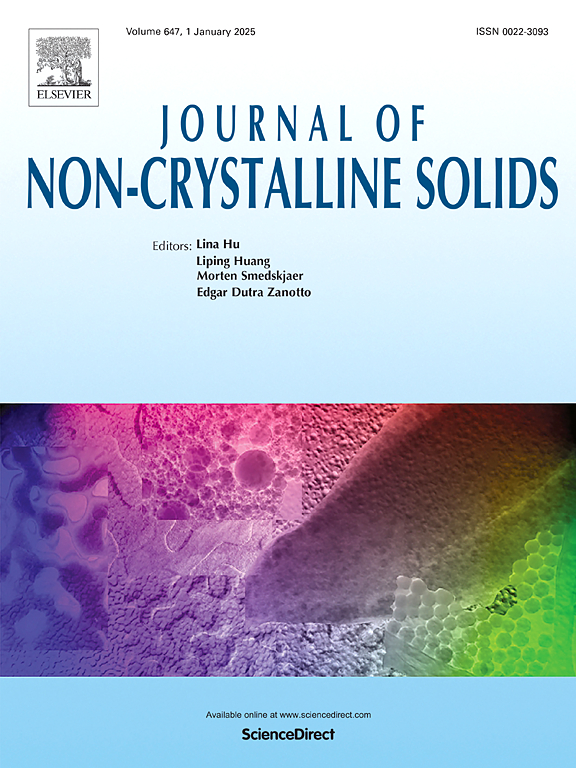Optimization of laser process method and HF-based chemical etchants for laser-induced deep etching of NXT glass
IF 3.5
3区 材料科学
Q1 MATERIALS SCIENCE, CERAMICS
引用次数: 0
Abstract
Corning Lotus NXT glass exhibits advanced optical properties and high thermal and dimensional stability, setting industry-leading standards in applications such as displays, medical devices, and sensors. Acid-based glass etching techniques have been widely used for decades to shape glasses suitable for target applications with acceptable surface properties. In this work, we optimized the effect of different hydrofluoric acid-based chemical solutions to etch NXT glass by the laser-induced deep etching (LIDE) technique with a focus on the etching speed, aspect ratio, and quality of the obtained surface. The results show that a volumetric ratio of 7:3 of HF to HNO3 achieved a higher etching speed ( m/h) and aspect ratio (19:1) under laser conditions of 1030 nm wavelength, 45 J pulse energy, shots, and a 40 kHz repetition rate, compared to other etching solutions in the LIDE process. The surface roughness of the etched samples treated with the three different acid solutions was analyzed using atomic force microscopy (AFM). The analysis revealed that all etched samples maintained surface roughness with RMS values below 1 nm. These results demonstrate the superior efficacy of this etching combination in achieving optimal etching speeds, aspect ratios, and ultra-smooth surface topography, making it suitable for display applications.
激光诱导深度蚀刻NXT玻璃的激光工艺方法和hf基化学蚀刻剂的优化
康宁莲花NXT玻璃具有先进的光学性能和高热稳定性和尺寸稳定性,在显示器、医疗设备和传感器等应用领域树立了行业领先的标准。酸基玻璃蚀刻技术已经广泛应用了几十年,以塑造适合目标应用的具有可接受表面性能的玻璃。在这项工作中,我们通过激光诱导深度蚀刻(LIDE)技术优化了不同的氢氟酸化学溶液对NXT玻璃的蚀刻效果,重点关注蚀刻速度、纵横比和获得的表面质量。结果表明,在1030 nm波长、45 μJ脉冲能量、2×104次和40 kHz重复频率的激光条件下,HF与HNO3的体积比为7:3时,与LIDE工艺中的其他蚀刻溶液相比,获得了更高的蚀刻速度(~ 850 μm/h)和宽高比(~ 19:1)。利用原子力显微镜(AFM)分析了三种不同酸溶液处理后的蚀刻样品的表面粗糙度。分析表明,所有蚀刻样品的表面粗糙度RMS值均低于1 nm。这些结果证明了这种蚀刻组合在实现最佳蚀刻速度,纵横比和超光滑表面形貌方面的卓越功效,使其适合显示应用。
本文章由计算机程序翻译,如有差异,请以英文原文为准。
求助全文
约1分钟内获得全文
求助全文
来源期刊

Journal of Non-crystalline Solids
工程技术-材料科学:硅酸盐
CiteScore
6.50
自引率
11.40%
发文量
576
审稿时长
35 days
期刊介绍:
The Journal of Non-Crystalline Solids publishes review articles, research papers, and Letters to the Editor on amorphous and glassy materials, including inorganic, organic, polymeric, hybrid and metallic systems. Papers on partially glassy materials, such as glass-ceramics and glass-matrix composites, and papers involving the liquid state are also included in so far as the properties of the liquid are relevant for the formation of the solid.
In all cases the papers must demonstrate both novelty and importance to the field, by way of significant advances in understanding or application of non-crystalline solids; in the case of Letters, a compelling case must also be made for expedited handling.
 求助内容:
求助内容: 应助结果提醒方式:
应助结果提醒方式:


